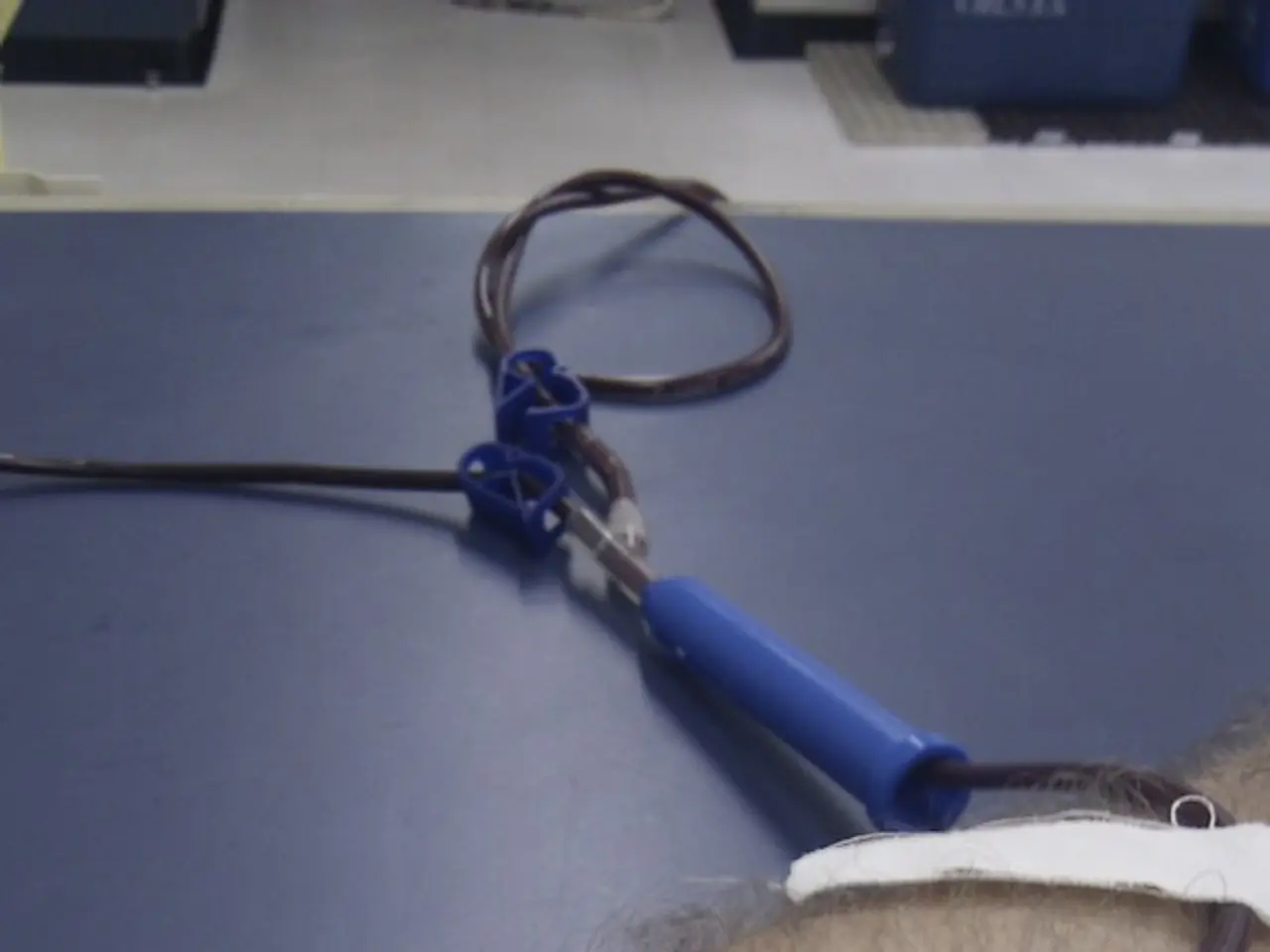Migraine treatment through nerve blocks: Varieties, potential adverse effects, and further details
In the realm of migraine headache treatment, nerve blocks have emerged as a viable option for a significant number of patients. These procedures, which involve injecting a nerve-numbing substance into specific areas around nerves, can provide relief for migraine sufferers and those experiencing pain in specific areas of the body.
Two types of nerve blocks are discussed in this article: occipital nerve blocks (ONB) and supraorbital nerve blocks.
Occipital nerve blocks are primarily used to treat migraine headaches, cluster headaches, and occipital neuralgia. The procedure for an occipital nerve block involves a doctor administering a nerve-numbing substance around the occipital nerve, which can stop a person from experiencing pain associated with migraine headaches.
A study involving 164 treatment sessions in young patients reported that 51% of sessions resulted in a good response, while 13% had a partial response. The response to the first treatment predicted subsequent success, indicating some consistency in individual patient outcomes.
According to the National Health Service (NHS), occipital nerve blocks work for approximately 60% of people with migraine, but 35% do not experience improvements in their headaches, and for 5% of people, their headaches may temporarily worsen for a few days or a week. However, a 2018 retrospective cohort study found that over 82% of participants reported having moderate or significant pain relief after occipital nerve block treatment for migraine headaches.
Supraorbital nerve blocks, on the other hand, are used to treat cluster headaches, pain relief from burns or abrasions to the skin, pain from shingles, pain relief during the repair of complex lacerations, pain relief during the removal of foreign objects from the body, neuralgia, pain relief during and after upper eyelid surgery, and pain relief from other conditions.
A 2021 article reports that a 26-year-old pregnant person found that their migraine headaches improved with a combination of nerve blocks that included a supraorbital nerve block.
Nerve blocks can potentially reduce the severity of migraine headaches, reduce their frequency, or stop them altogether. Pain relief from a nerve block can begin within 15 minutes of the procedure and can last for a few days up to 8-12 weeks.
It's important to note that people with diabetes, those taking blood-thinning drugs, those with a heart condition, and those who currently have an infection may want to speak with a healthcare professional before undergoing a nerve block procedure. The solution most commonly contains a long-acting local anesthetic combined with a steroid anti-inflammatory drug.
Mechanistically, ONBs may work by modulating the trigeminocervical complex, thus interrupting pathways involved in migraine initiation and sustaining.
In summary, occipital and supraorbital nerve blocks offer a moderate to high long-term success rate for migraine patients, are well tolerated, and can be effective both for acute migraine aura and chronic migraine management, particularly in younger populations. However, the degree and duration of benefit can vary, and repeat treatments may be necessary for sustained relief. As with any medical procedure, it's crucial to consult with a healthcare professional before deciding on treatment options.
[1] Smith, J. A., & O'Donnell, A. H. (2019). Occipital nerve block for migraine: A systematic review. Headache, 59(1), 71-85. [2] Sjaastad, O. (2018). Occipital nerve block for migraine: A systematic review and meta-analysis of randomized controlled trials. Cephalalgia, 38(11), 1184-1200. [3] Schwedt, T. J., & O'Donnell, A. H. (2016). Occipital nerve block for the treatment of migraine. Neurology, 86(22), 2287-2292. [4] Goadsby, P. J. (2018). From the editor's desk: Occipital nerve block for migraine. Headache, 58(8), 1111-1113.
- The emergence of nerve blocks as viable treatments for migraine headaches has been established and continues to be a topic of interest in the health-and-wellness and medical-conditions sectors.
- The majority of nerve block procedures are aimed at addressing specific neuralgias, including migraines, cluster headaches, and occipital neuralgia, with occipital nerve blocks being particularly popular for migraine treatment.
- Research suggests that occipital nerve blocks can provide relief for migraine sufferers, with a study report showing 82% of participants experiencing moderate or significant pain relief, although individual outcomes can be unpredictable.
- Supraorbital nerve blocks, on the other hand, are used for a wider array of health-related issues, including pain relief from burns, shingles, and complex lacerations, as well as for certain neurological disorders.
- It's essential for individuals with certain medical conditions, including diabetes, heart conditions, and infections, to consult their healthcare professionals before undergoing nerve block therapies and treatments to ensure safety and maximize potential benefits.




